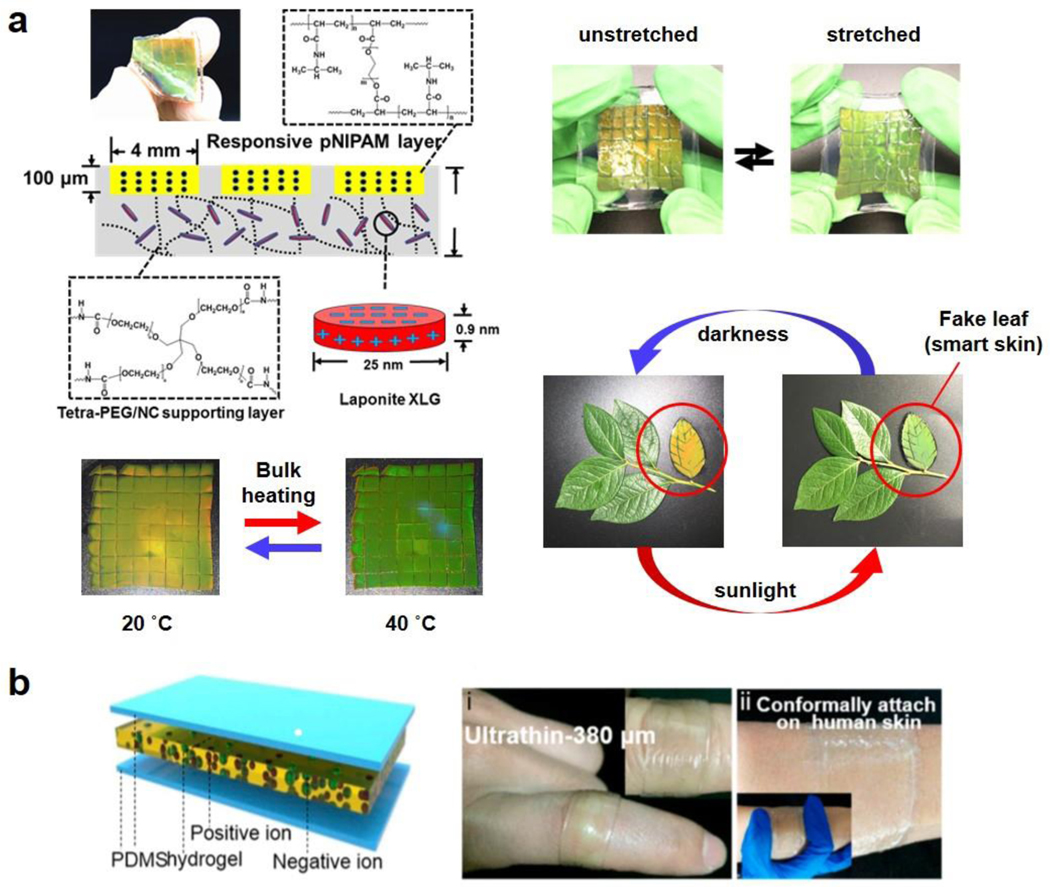Figure 13. Smart skin MAMs.
a) (top left) NIPAM hydrogels containing photonic crystals were embedded into a strain-accommodating material, with tunable toughness via the inclusion of Laponite nanoclay particles. This created a color changing smart skin that maintains its shape and size during its sensing. This strain-accommodating smart skin can change its color in response to (bottom left) bulk heating, (top right) stretching, and (bottom right) sunlight. Such a material holds potential applications for solar-triggered camouflage, as evidenced by its visual similarity to natural foliage. Readapted with permission[34]. Copyright 2019, American Chemical Society. b) A triboelectric energy-harvesting skin that can sense the mechanical force and transfer the energy into electrical power. (left) A schematic of the MAM, showing the PDMS electrode layers (blue) and dielectric polymer hydrogel core (yellow). (right) Demonstration of these thin and compliant smart skins that can be conformally attach on human skin. Readapted with permission[109]. Copyright 2018, American Chemical Society.

